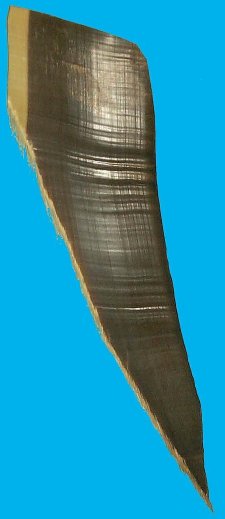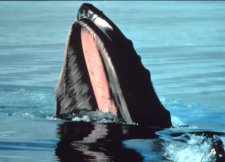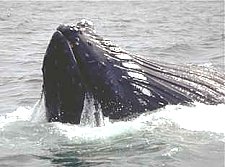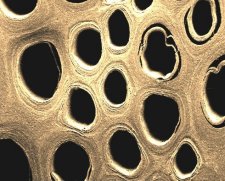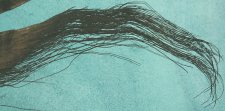| Baleen (whale-bone) uses | |
|
Baleen Until the end of the 19th century it was baleen, rather than oil, that was the primary product sought by the Greenland whalers. Confusingly, baleen was always known as whale-bone by the whalers and by those who used it in manufacture. It is not bone, but a derivative of skin! Baleen whales eat small, planktonic crustaceans such as copepods and krill, or small shoaling fish including herring and sardines. These whales have no teeth, instead, they feed by straining their food from the sea using a series of baleen plates that are made of keratin, the same material that forms your hair and nails and the hooves and horns of cows. The baleen plates hang from the upper jaws of the whale, spaced 2 cms apart and at right angles to the long axis of the jaw. The outer edge of each plate is smooth but the inner edge becomes frayed into bristles that form a matted sieve. When the whale is feeding, water is taken in through the open mouth and expelled out through the baleen plates. Any food taken in with the water is trapped on the baleen bristles, removed with the help of the tongue and then swallowed. The number of plates varies from 300-350 pairs in different species and the length varies greatly from less than half a metre to over 4 metres. Whales that feed on small crustaceans have baleen plates with very fine bristle while those that feed on larger crustacea, such as krill, or on fish, have very coarse bristles.
Baleen is strong, light, flexible and hard wearing, attributes that make it useful to humans as a construction material, and which reflect the microstructure of the baleen. In cross section, a baleen plate consists of 3-4 layers of horny tubes, which become thinner towards the centre and which are embedded in a fibrous matrix. This is clear even to the naked eye but is best seen under the scanning electron microscope (S.E.M.). The tubes run the length of the plate and emerge as the hair-like bristles on the inner edge. The plates are constantly worn away at the free ends but are replenished by continual growth at the root, just as is our own hair. This system of tubes combines minimum weight with maximum strength. A hollow cylinder has much the same degree of rigidity as does a solid one but, of course, the weight is much less. Baleen plates, light, strong, inert, highly flexible, easily cut into strips, and capable of being moulded into complex shapes, have found many commercial uses in past times. The most profitable, by far, was the manufacture of fashion items, particularly corsets. However, fashion is a fickle business and when not needed for clothing baleen was put to much more prosaic uses including chimney sweep brushes and upholstery stuffing. A Mr Sevey, trading in Boston, Mass., in the late 19th century offered no less than 53 items made from whale bone. (In case, after perusing Mr Sevey's list of merchandise, you are wondering what a Probang is, or was, try the Online Oxford English Dictionary!). |
|
| |
